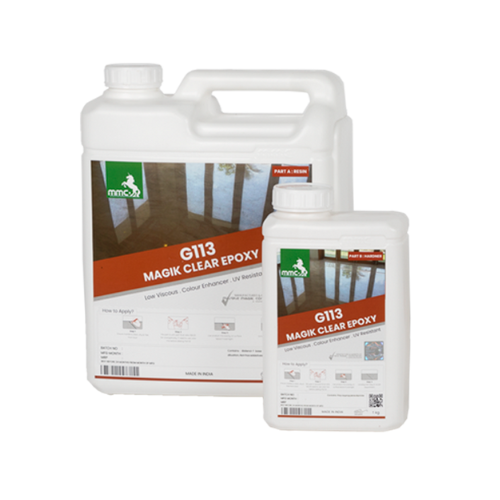Grouting tiles in hot weather presents its own set of challenges, as the high temperatures can cause the grout to dry out rapidly, potentially leading to weak bonds and uneven finishes. To ensure a successful tile installation, it is essential to take certain precautions and follow specific techniques when grouting in hot weather. In this blog post, we will explore valuable tips and strategies to help you prevent tile grout from drying out too quickly in hot weather conditions, ensuring a durable and visually appealing result. Let’s dive in!
Time Your Grouting Wisely
Timing is crucial when grouting in hot weather. Plan your grouting schedule during the cooler parts of the day, such as early morning or late evening, when the temperatures are more moderate. Avoid grouting during the hottest hours, as the extreme heat can cause the grout to dry too quickly, making it challenging to work with and achieve a smooth finish.
Prepare the Tile and Grout in Advance
Before you begin grouting, it is important to properly prepare both the tiles and the grout. Ensure that the tile surface is clean and free from any dust, debris, or excess mortar. Pre-moisten the tiles with water using a sponge or spray bottle to create a slightly damp surface. Similarly, hydrate the grout by adding the recommended amount of clean water and allowing it to sit for a few minutes before mixing.
Use Cool Water for Mixing
When mixing the grout, use cool water instead of warm or hot water. Cool water helps to slow down the curing process, giving you more time to work with the grout before it hardens. Avoid using cold water, as it may hinder the grout’s ability to cure properly. Follow the manufacturer’s instructions regarding the water-to-grout ratio to achieve the desired consistency.
Work in Small Sections
Divide your grouting process into smaller sections to prevent the grout from drying out before you can finish the application. Apply the grout in manageable areas, ensuring that you have enough time to spread it evenly and work it into the tile joints before moving on to the next section. This approach allows you to maintain better control over the grouting process in hot weather conditions.
Keep the Grout and Tools Shaded
Protect the grout and your grouting tools from direct sunlight and extreme heat by keeping them in the shade during the application process. Direct exposure to the sun can cause the grout to dry out rapidly and result in uneven curing. Shade provides a more controlled environment, allowing you to work with the grout at a reasonable pace and achieve consistent results.
Mist the Tile Surface
To counteract the effects of rapid evaporation in hot weather, periodically mist the tile surface with water as you work. Use a spray bottle to lightly dampen the tiles, focusing on the areas where you have applied the grout. This helps to slow down the drying process and allows the grout to cure more evenly, reducing the likelihood of cracks or shrinkage.
Use Grout Additives
Consider using grout additives specifically designed to extend the curing time in hot weather conditions. These additives can be mixed with the grout according to the manufacturer’s instructions and help slow down the drying process. They provide additional flexibility and workability, allowing you more time to achieve a smooth and consistent grout application.
Clean Grout Residue Promptly After you have
Finished grouting a section, promptly clean any excess grout from the tile surface. Hot weather can accelerate the drying and hardening of grout residue, making it more challenging to remove. Use a damp sponge or cloth to carefully wipe away the excess grout before it sets. Regularly rinse and wring out the sponge to ensure effective cleaning without excessive water pooling on the tile surface.
Maintain Adequate Ventilation
Ensure proper ventilation in the grouted area to allow for air circulation and moisture evaporation. Open windows or use fans to create a gentle breeze that helps remove excess moisture and aids in the curing process. Be cautious with strong drafts or direct airflows, as they can cause uneven drying or premature hardening of the grout.
Protect the Grout During the Curing Process Shield the grouted area from direct sunlight, extreme heat, and rapid temperature changes during the curing process. Cover the freshly grouted tiles with a light cloth or plastic sheeting to provide shade and prevent direct exposure to intense heat. This protective barrier helps maintain a more controlled environment, allowing the grout to cure uniformly.
Conclusion
Grouting tiles in hot weather requires careful planning and execution to prevent the grout from drying out too quickly. By timing your grouting wisely, using cool water for mixing, working in small sections, keeping the grout and tools shaded, misting the tile surface, utilizing grout additives, promptly cleaning grout residue, maintaining adequate ventilation, and protecting the grout during the curing process, you can achieve a successful tile installation even in hot weather conditions.
Remember, patience and attentiveness are key when grouting in hot weather. By implementing these tips and techniques, you can ensure that your grout cures evenly, bonds securely, and provides a durable and visually pleasing finish. So, embrace your tile installation project with confidence, even in scorching temperatures, and create a stunning space that stands the test of time.































































